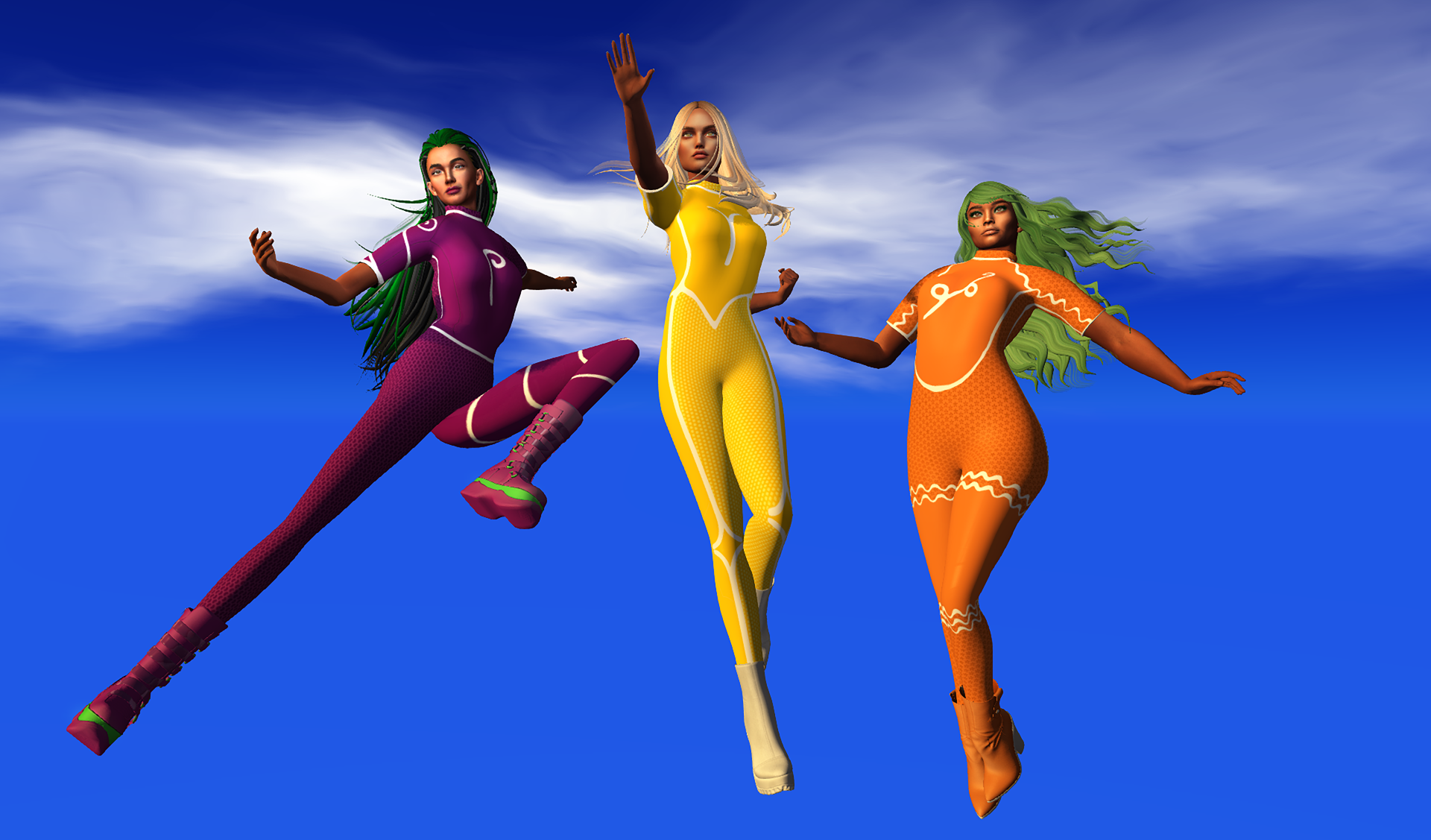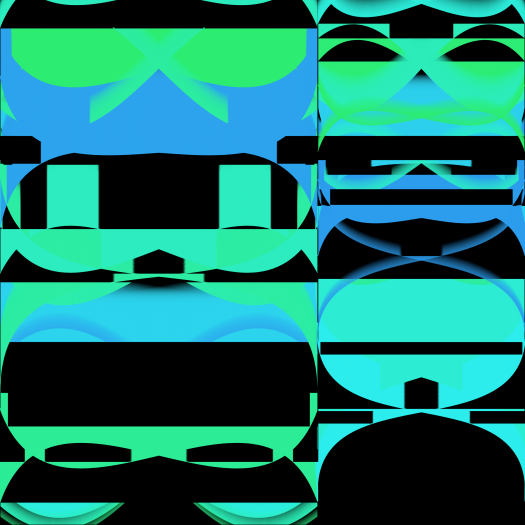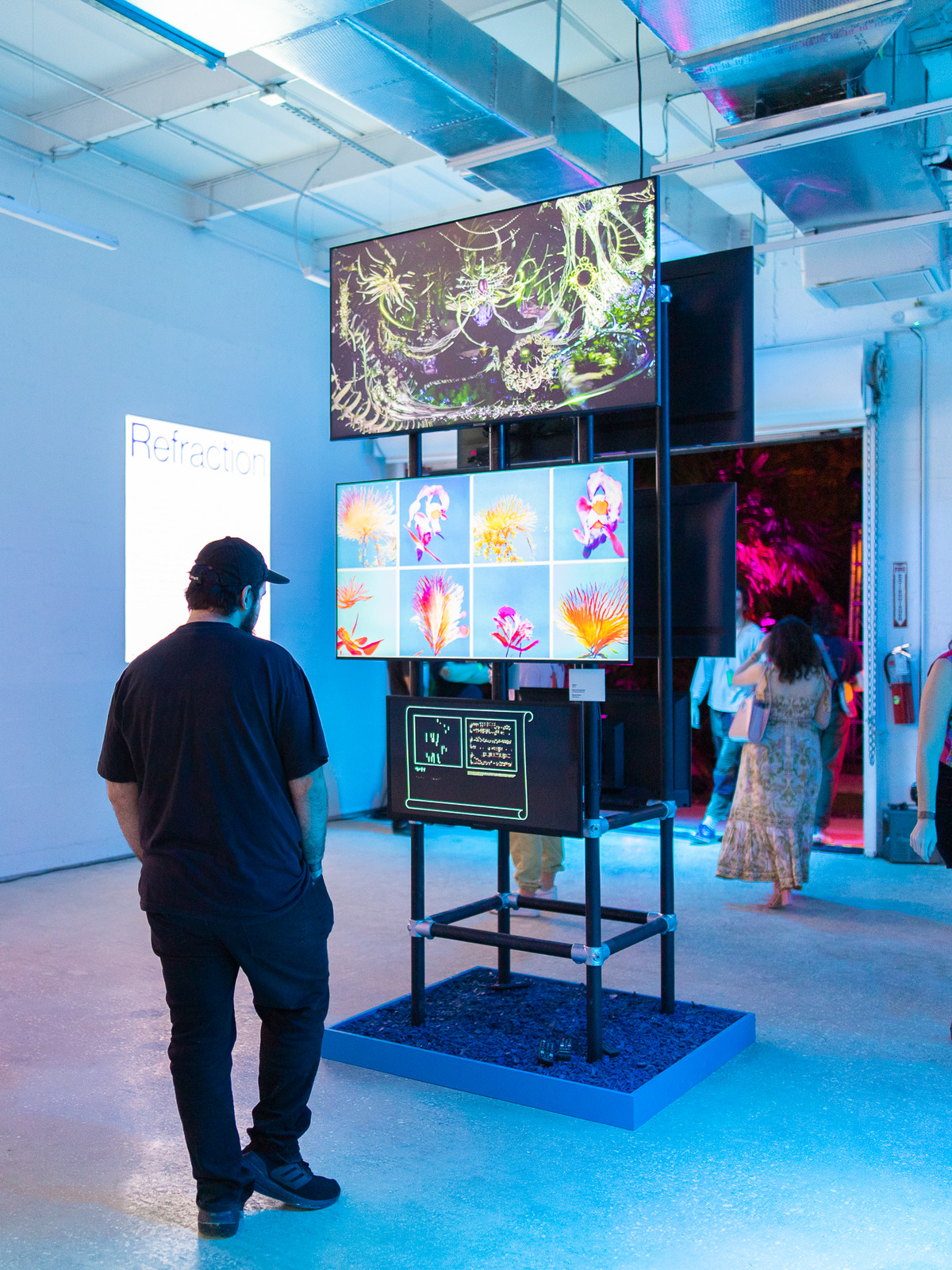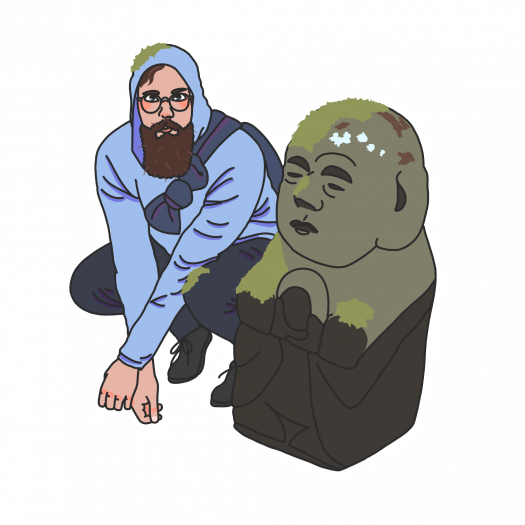Conversations
Skawennati & LaTurbo Avedon
by OutlandPeople have been imagining and developing virtual worlds with digital tools since the 1980s. But even as the technology needed to render and explore these worlds has improved, mainstream adoption continues to lag. Second Life, the groundbreaking virtual world that opened in 2003, never got the same traction as subsequent social networks where avatars were 2D images rather than animated 3D beings. Nevertheless, Second Life boasts a dedicated community of users, including artists who are attracted to the world’s potential for unfettered creative play—rather than to the possibility of trading virtual property with an in-world currency, an innovation that has been adapted and emphasized by more recent blockchain-based metaverses. The land Skawennati owns in Second Life, AbTec Island, is named after Aboriginal Territories in Cyberspace, a research group she cofounded with husband and collaborator Jason Edward Lewis to explore opportunities for online sovereignty. AbTec Island is where Skawennati shoots machinima—animated films made with real-time motion graphics—that imagine Indigenous histories and futures, as part of her broader practice that involves social organizing, public installations, and fashion. For LaTurbo Avedon, an artist who exists as an avatar, Second Life is where they first organized virtual social events, building clubs for cosplay and other performances of fluid identity. But Avedon’s interest in virtual worlds goes beyond Second Life; in 2020 they realized an ambitious project in Fortnite for the Manchester International Festival, and are currently constructing a metaverse on the blockchain called Materia. Outland brought Skawennati and Avedon together to share their thoughts on the values of Second Life, what identity means in virtual communities, and the prospects for widespread immersion in the metaverse.
LATURBO AVEDON Virtual worlds have been in the periphery of networked experience for many years, but have retained a sort of buffer from mainstream adoption. People are excited but also reluctant about immersion, because it creates a proposition much larger than the lightweight behaviors of instant messaging, chat rooms, and utilities that keep one foot connected to the real.
SKAWENNATI When the Palace, the first graphical chat software, came out in the late ‘90s, I fell in love immediately. I spent all my time there. I begged people to join me. I was an evangelist. They should have paid me for the way I promoted them. But people did not want to download client server software. I saw the same thing happen with Second Life, because I was almost as excited but knew from experience that other people wouldn’t be.
One of the big issues that people had was authenticity. For us in the Indigenous world, that’s a huge thing. Pretendians aren’t new—we just used to call them wannabes. So when I started talking to people about using these platforms with avatars, they asked, “‘How will we know if it’s really a Native person talking to us?” Others wondered how they’d know it was really a guy, or a girl. On Facebook and Twitter, even though people have handles, they aren’t as afraid of not knowing who they’re talking to. That’s what I think the big barriers are for Second Life.
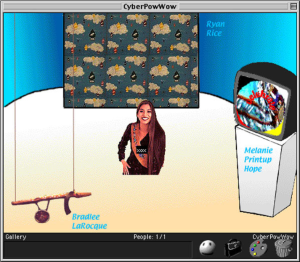
AVEDON There are many different vectors for why people choose to enter immersive simulations, but I think that a shared variable is the interest in virtual fluidity. Authenticity is a foothold of the early internet, the notion of digital dualism holding tight to the real AFK self. For me, virtual worlds offer an exit from that narrative, and permit users to dig a bit deeper into themselves and their self-representation.
SKAWENNATI I do love the dress-up and cosplay, the extendability of your visual identity that is afforded by Second Life.
AVEDON Maybe this is a question to the viewers of the 2010s and their relationship to screen-based simulations. Was this virtual club enough? Was my avatar self enough? Is this the cyberspace that many users were seeking?
You will notice that many of the works I started in 2012, such as Club Rothko and New Wild West in Second Life, were centered around virtual clubs and nightlife. They were about how avatars chose to present themselves and socialize at this immersive avatar-based level. The avatar who enters a virtual club is the person they created, and that is a level of agency I have yet to see on platforms like Voxels and Decentraland. There is less room for queer creation and experimentation in this new wave of metaverse platforms. They are often bound to specific templates for identities.
My early Second Life works were demonstrations and also performances on the grid, showing the convergence of media and fluid character creation in this context. For Save 01 (2012), I was bringing my virtual self to dance with a portrait of Slavoj Zizek, a conversation that would raise questions through this crash of different media and theory. My virtual self could dance forever with this frozen jpeg, to the tune of Alice Deejay, “Better Off Alone.”
SKAWENNATI It’s kind of embarrassing but I haven’t checked out Decentraland or Voxels or Meta’s Horizon Worlds. I’m very busy and happy in Second Life. LaTurbo, it would be fun if you came to visit me at my place. Or I could visit you.
AVEDON I’d love to visit sometime!
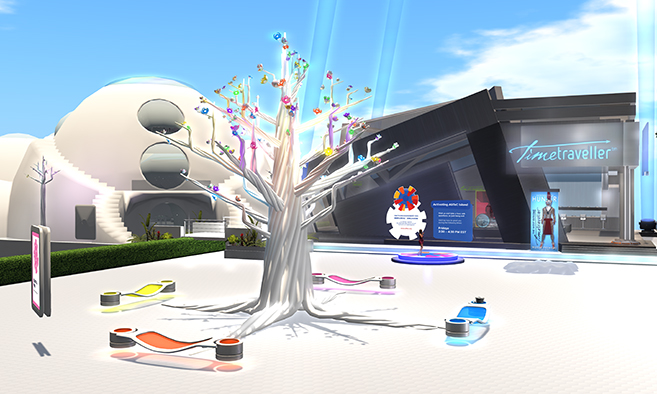
SKAWENNATI If Second Life goes bankrupt, like it once almost did, I would probably not go looking for another virtual world. I feel the same way about my marriage –I don’t think I’ll want another one! It took years to figure out all of Second Life’s idiosyncrasies and limitations. I don’t really want to spend that time again.
AVEDON I totally understand your sentiment. It is a fundamentally different environment compared to many of these new platforms. The grid is a particular framework, and I really haven’t seen a comparable culture or environment develop with a similar proposition.
I exist in all sorts of simulations, I am constantly gaming and learning new platforms. I guess I am searching, trying to find fertile terrain to develop meaningful work. I have done projects in Fortnite, Star Citizen, Minecraft, all hopeful prospects for deeper experiences.
SKAWENNATI Do any of these platforms make you more hopeful than others?You’re looking for fertile terrain—are you finding it?
AVEDON I am hopeful when I see the tech and the power of the software, but liberty is missing.
There are complex end-user license agreements, rules, many different generational changes to new tech and environments. Second Life is a strange exception, to this day. It makes me wonder what a successor can and will become for a mature, open-ended virtual sandbox, because many companies seem to close those out.
I am really interested in creating my own reactive space to this disappointment I’ve found in new virtual worlds recently, and in building decentralized environments, which I call “exo,” through Materia.This past summer I invited the public to create the first avatars for the space, through an event called Club Zero. This was a way for me to create the first “party,” so to speak, who will explore this universe and build it with me. I want to make sure that other users have the opportunity to interface with this experience, and to shape it over time.
LaTurbo Avedon: Save01, 2012
SKAWENNATI A lot of virtual worlds depend on gamification for engagement. I think a lot of people are bored—which I don’t understand, because there’s always so much to do. There are so many art projects to do. There’s so much activism to do. There would be so much freaking cleaning of my house to do if I were really bored. So I don’t understand how people can be bored. But they are, and they need structure. That’s what games do. That’s what religion does, too: it gives people structure and goals and frameworks. Second Life might be more popular if it had a goal, but then it wouldn’t be what it is. I’m very fine with Second Life not being that popular.
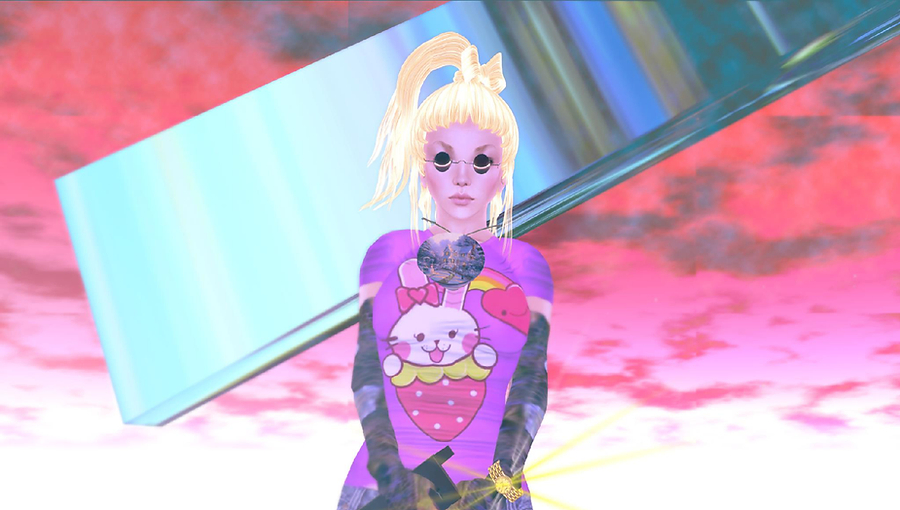
I did try World of Warcraft once, and I loved the goals and the talking to other players. I felt like I could happily never leave. I have a good AFK life, but there’s something about being in a virtual environment that is very attractive to me.
AVEDON I really connect with you about what you experience in Second Life, and it really makes me think about how vulnerable the platform is. At their core, “metaverse” propositions are massively open-ended, and that is what I think has failed for many of these recent sims. I mostly look at games as canvasses to render my own performances, rather than have some sort of in-game completion. Setting up the virtual museum of “Panther Modern” in 2013 was my attempt to invite other artists to push out of these frameworks of trad white cube galleries. I am not really interested in replicating them, but in surpassing them.
Are there other tools that you could see yourself doing this work with? Would you ever use offline software?
SKAWENNATI That’s a great question. I’ve looked at Blender, and I could probably make my movies using it now. But I don’t want to. There’s something about working in a networked environment even though I’m not interacting with strangers—it already has its own physics and rules. I love having rules, which you must sometimes break, of course. I make rules for my artworks—like, the rule for a machinima is that the camera can’t move. It gives the artwork cohesion.
I’m staying in Second Life until it’s gone and then I don’t know what I’ll do. Someone told me that Mark Zuckerberg is thinking of buying Second Life to destroy it, which is scary.
AVEDON Oh no, I haven’t heard that!
SKAWENNATI Early on I called my avatar xox and I’ve kept that name, because I like it. I’ve built my avatar’s identity and I feel I can play with it more than I can play with my own. With my machinima works, starting with TimeTraveller™ (2008–13), I’m trying to achieve a certain level of authenticity. Most of my characters are voiced by Mohawks. It isn’t about fantasy. It’s about showing another perspective of the history that we were taught.

AVEDON What I love about simulated space is that there is room for many different strands of experience. Your application of authenticity is not counter to the approaches I and other avatars hold. I prefer to hold a mirror to much of what is happening in this time. I enjoy that users can choose the sims that best fit their desired virtual experience. There is no exclusionary experience when done correctly.
When I decided to break out of Second Life and connect via social media, I had a hard time passing through these “real name” verifications of the platforms. The early years were pretty tough. I had some toxic peers who tried to doxx me. That was a really tough experience that I had to work through. I was making a statement that being an avatar was enough in the social media age, and that was not accepted by a lot of people at first. But as time passes, avatars are almost ordinary today. VTubers have hundreds of thousands of followers today, and that makes me really happy to see. I am grateful that I was able to take the difficult times in stride and continue to develop my virtual self. I learned to protect myself more and choose the right way to articulate my work outside of places like Second Life. Character creation is a large part of my work, for both my self-expression and also the shared interest in retaining these identities over time.
SKAWENNATI My avatars have changed with time, too. At first, xox was a smiley face. That was all you could do in the Palace at first—choose your favourite color smiley face. Then it evolved so that you could use your own image for an avatar, so I used a picture of Miss Native America. I also had a picture of Tank Girl, from the 1995 sci-fi movie, where she’s dressed as an Indian because I thought that was hilarious. Today she’d get in a lot of trouble for that. When I got to Second Life I chose a default avatar that I had for a very long time. I’’m a cheapskate so I only wanted to use free stuff. I went around wearing demo hair for months.
AVEDON I love demo hair!
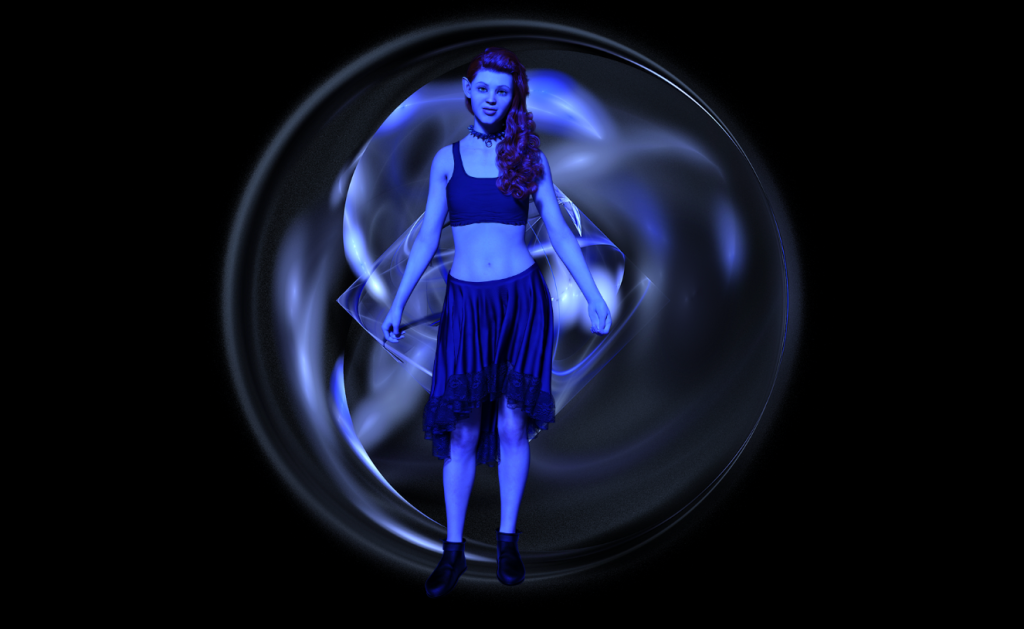
SKAWENNATI My husband is a university professor, and together we created video game workshops for Indigenous youth. When we were still trying to figure out exactly what they were going to be, I proposed that we teach them to make machinima and do it in Second Life—again, for free. So we’d go to the sandboxes, which are places where you can experiment with the building and creating tools, but they’d keep shutting down, and we’d lose what we made. Finally it became clear that we needed to buy an island, which we did. When you do, you get an allowance in Lindens. So then I had all this money to make xox look the way I wanted, and that’s when she became the beautiful cyberpunk avatar that she is today. She’s still a classic avatar, but we’re now on the verge of getting a mesh avatar.
AVEDON It is such a big transfer to move to mesh avatars. They’re more complex geometry models that continue to improve the visual fidelity of Second Life—more articulation, room for better textures. But do you think you need to update? One question I wonder about a lot is “to update or not to update.”
SKAWENNATI The biggest problem for me is that, at the moment, mesh bodies can’t lip sync. I want my avatars to be able to lip sync to the actors’ voices for machinima.
I am thinking about doing a piece about aging. One of the reasons I think my avatar is so beautiful is because she doesn’t age. But I am aging. I think there is an artwork in there akin to The Picture of Dorian Gray. “The Picture of xox”!
I tend to resist updates. My operating system is constantly asking me to update and I put it off as long as possible. As soon as you update one thing, you lose something else. And with avatars you don’t know if the old garments will still fit, if your old gestures will look right, or if you’ll have to make other adjustments.
AVEDON With some simulations I don’t want to roll them forward, I want to keep them in the resolution that I enjoyed the most. Maybe I don’’t need to be subdivided and high resolution.

SKAWENNATI I agree. Although I’m so happy about mesh hands. They’re so beautiful. In the before times, bodies could only have hands in three positions. Now you can do all kinds of things with them.
There is a big shift between TimeTraveller™—which is set in the future, but mainly takes place in the past—and the piece that followed, She Falls for Ages (2017). I really wanted that machinima to take place in the future that I want to see—a sustainable peaceful one, but She Falls for Ages is actually a retelling of our creation story, which is the beginning of time. There are many different versions of the story, but there’s always a special tree that is uprooted, leaving a hole that a pregnant woman jumps or falls or is pushed through, and she lands on an earth covered with water. In She Falls for Ages we start off in this futuristic place and yet we end up at the beginning of time on earth. A kind of loop happens. The Peacemaker Returns (2016–17)also takes place far in the future.
But for my next project, They Sustain Us, I wanted to be close, like five minutes in the future. It’s like Marvel—our world, but Corn, Beans, and Squash are superheroes. I love the idea that people should revere them as sustainers, to respect the land. I don’t mean to romanticize indigeneity, but we’re in a climate crisis and our political will and mindset need to change completely. That has to come from the people.
AVEDON I started a project in 2020 called Permanent Sunset, where I was able to blend some of these different in-game moments that I’ve experienced. Serving as self-portraits and performances from these different places, I brought the different versions of my avatar self to idle in virtual sunsets. As an ongoing work, it’s my way to unite my different formats instead of saying one is current or superior. I enjoy this idea of braiding data and identities together—the sum of my virtual parts remains.
I like the idea that we both have ways of handling this simulated time, and keeping it in our own manners.
SKAWENNATI That’s very nice. I like that, too. We’re opposite sides of the same coin. You’re trying all these different virtual worlds and I’m sticking with the one. It’s super fun to see the same avatar in many different platforms. If I was just a slightly different person, I might do that.
Another difference is that I didn’t used to think that my avatar was interesting enough to be the focus of my artwork. But slowly I realized that she is interesting—you already knew that.
—Moderated by Brian Droitcour
